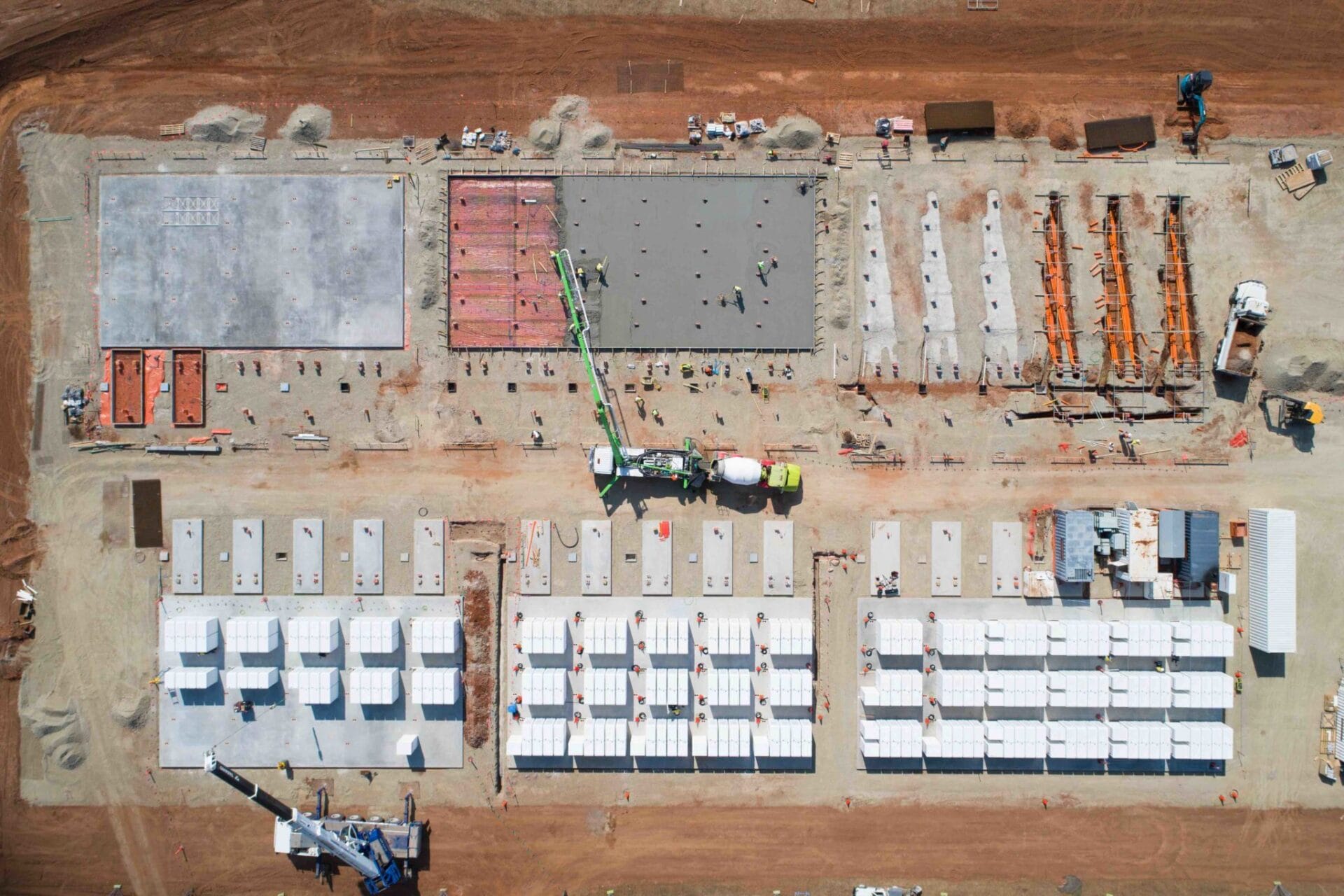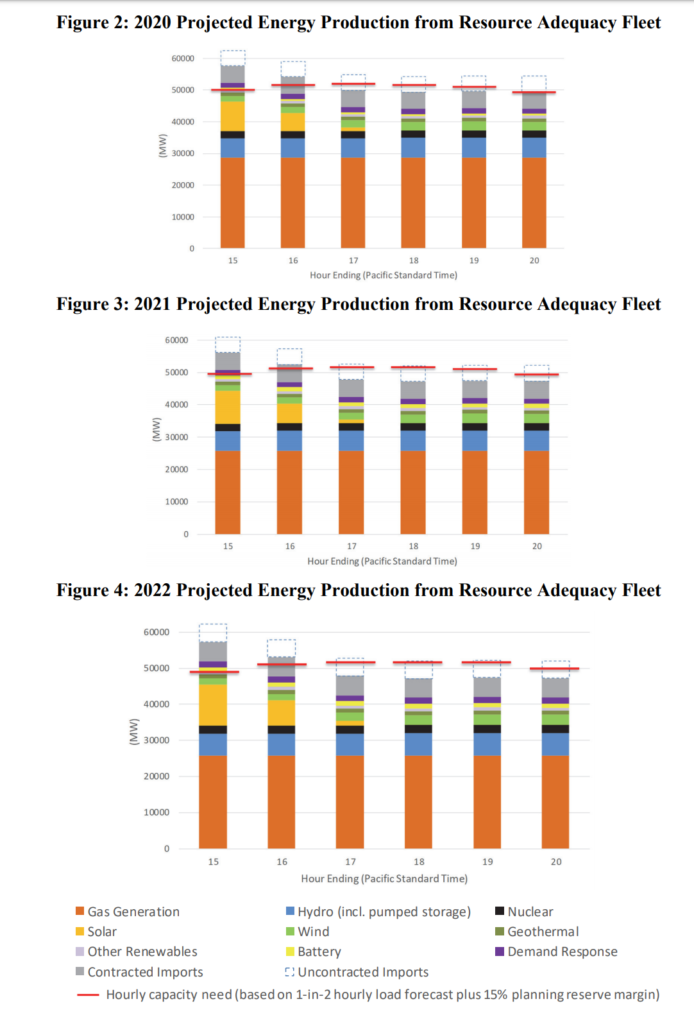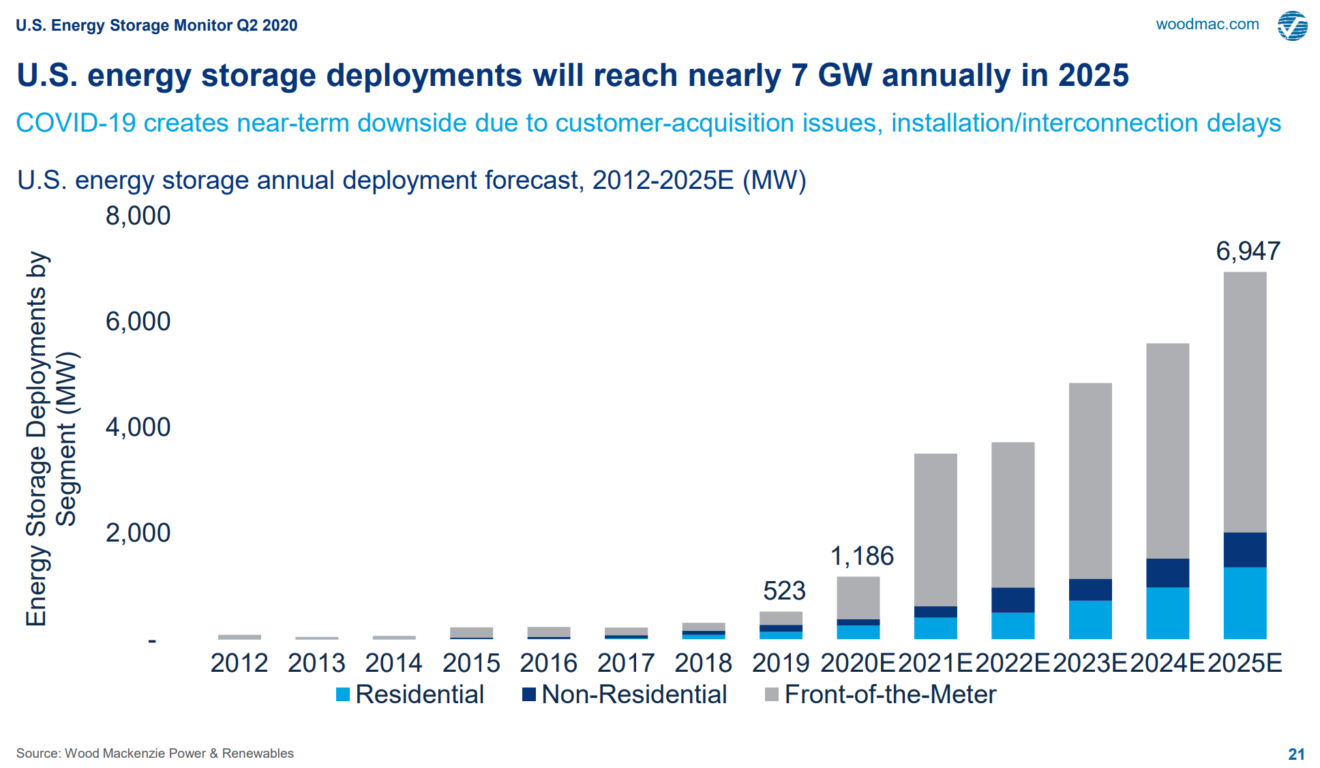Vistra Energy has received approval from the local building authority to install a 1.5 GW/6 GWh energy storage system at Moss Landing in California. The approval, technically, was to expand the prior approved energy storage facility that was 300 MW/1,200 MWh. No contract for the facilities energy has been announced.
This battery, if it was running today, would be the world’s largest by a long shot past Tesla’s 150 MW/193.5 MWh Hornesdale, Australia battery. As well, it is the second largest battery being considered anywhere on earth, with the largest being the stuff of dreams Australia to Singapore solar+storage 10 GW/30 GWh electricity export plan.
With all of the hubbub though, the facility on its own cannot fix what ails the California power grid. That fix will take somewhere between 16 and 20 GWh of energy storage, about three of the potentially expanded Moss Landing facility.
The above image is extracted from a report filed with California regulators last fall. Each column represents an hour in the day, starting at 1500 (3 PM PST) and ending at 2000 (8 PM PST). The red line across each column notes how much energy capacity is projected as needed during that hour. The time period specified is peak of California’s electricity grid demand – summer evenings in September.
In 2022, starting at 5 PM PST – the gap between projected availability and demand is 3,900 MW, 4,700 MW (peak value), 4,200 MW, and 2,600 MW. If we were to total these needs – which is a very inexact way to do things – we’d see a need for about 15.4 GWh of electricity to potentially be supplied over that four hour window.
And since California isn’t adding gas, coal, or nuclear – and must power it’s evening time with electricity from intermittent electricity sources of wind and solar – we’re going to need just about three of these world’s largest batteries – about 5 GW/16 GWh worth of battery.
In about two years.
Globally, the world could keep up with California’s needs. Benchmark Minerals sees massive manufacturing growth happening right now in lithium ion energy storage, with a literal 142 ‘gigafactories’ under construction globally.
So the capacity is there.
Analysts Wood Mackenzie Renewable & Power sees the United States as a whole potentially installing about 4 GW/16 GWh in 2021 and 2022 each. California would need grab about half that total volume to meet its needs.
All of that – a looming energy shortage, announcements of record sized batteries, massive ongoing global capacity expansions – throws a nice mix of ingredients into the past weekend’s cauldron of rolling blackouts and Death Valley reaching possibly the highest temperature ever recorded on earth.
No sweat, Cali has got it!
Want more solar industry news? Check out the Commercial Solar Guy blog.



